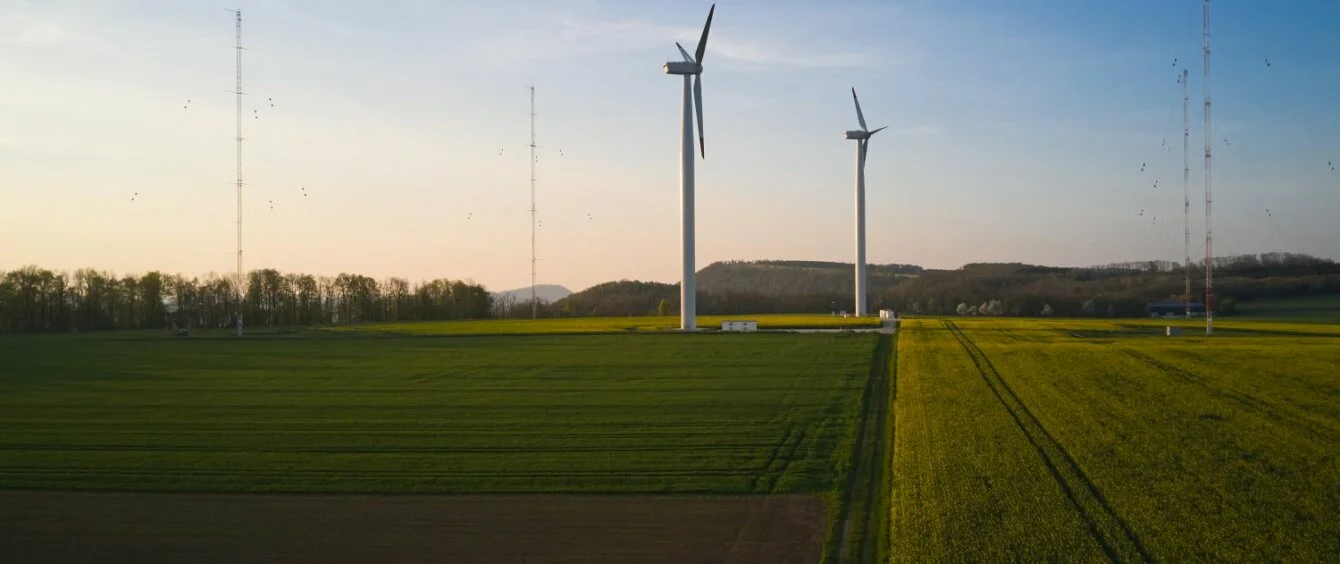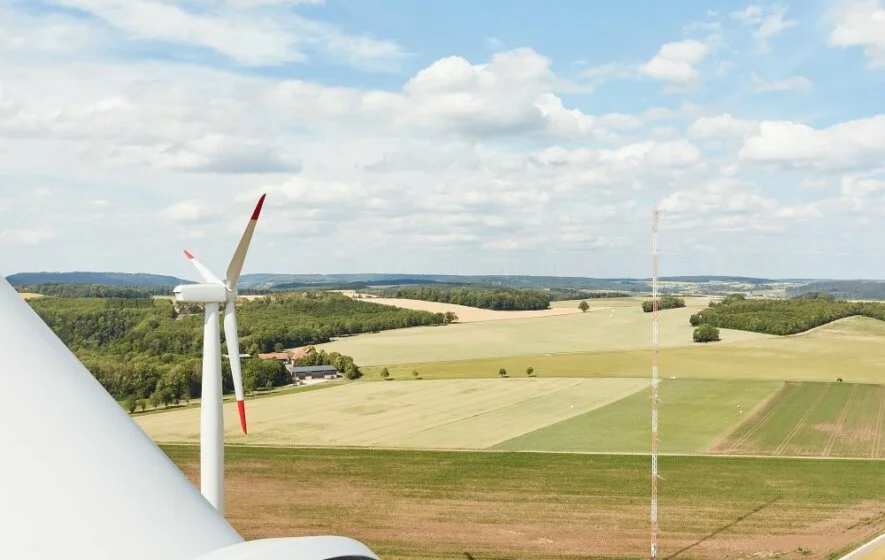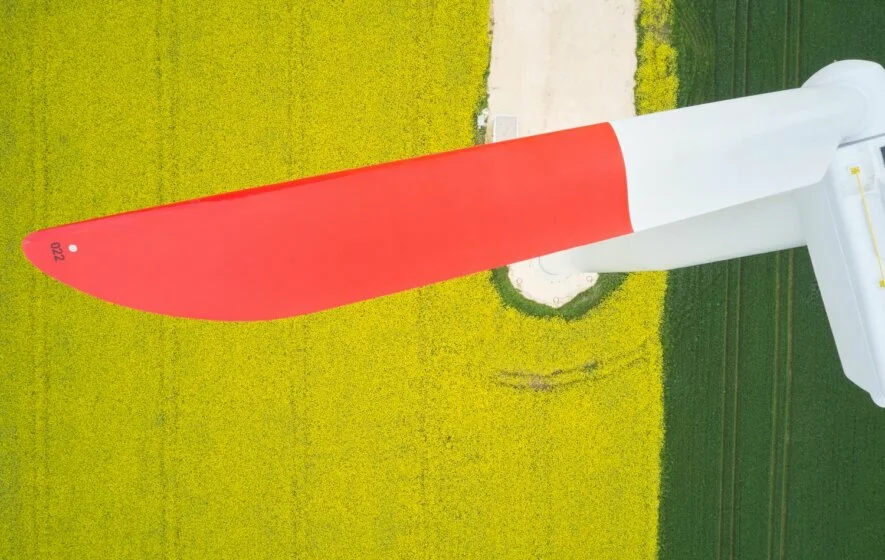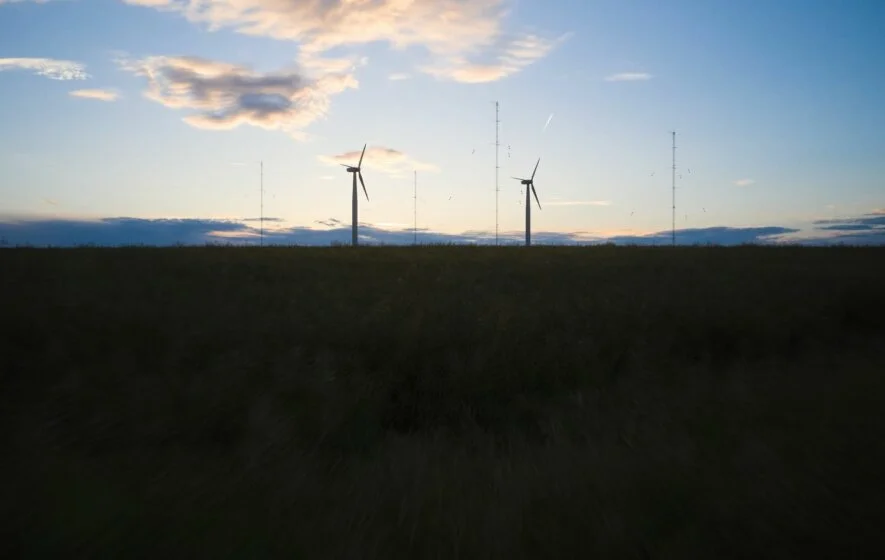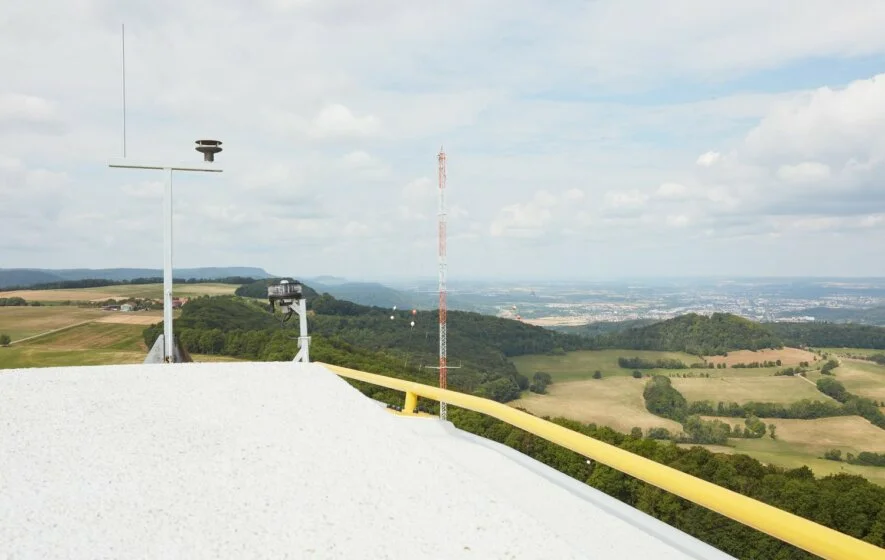Low mountain ranges run throughout Germany – from the Teutoborg Forest to the Black Forest and from the Eifel to the Ore Mountains. Besides offering a spectacular sight, this topology provides attractive conditions for generating green electricity as it features high wind speeds. Nevertheless, most of the wind turbines are currently in the flatland, often close to the coast. In a new research project, scientists are thus exploring in the Swabian Jura how to ensure efficient deployment of wind turbines in the rough conditions of mountainous regions.
To this end, the Baden-Württemberg Center for Solar Energy and Hydrogen Research (ZSW) and the Baden-Württemberg Ministry of the Environment, Climate Protection and the Energy Sector set up the WINSENT test field in the District of Göppingen. It features two test wind turbines equipped with measuring technology from their foundations to their rotor blades. The setup also includes four meteorological measuring masts as well as a host of additional measuring instruments. The field trial starts started in March 2023. The German government is supporting the project to the tune of 12.7 million euros, with the State of Baden-Württemberg contributing another 1.9 million euros.
With a height of just under 100 metres and a capacity of 750 kilowatts, the test wind turbines are miniscule compared to the variants currently up and running commercially. However, the researchers intend to apply the measurement results to large-scale systems. To accomplish this, they use computer simulations and what are known as ‘digital twin’ wind turbines. They transfer the measurement data obtained from the field trial to these virtual models, in which they process them further.
Laser measurements detect features unique to mountainous terrain
Similar laboratories that work under real-world conditions already exist, some of which are located in Germany. For over 25 years now, windtest grevenbroich has been testing innovative prototypes on the Frimmersdorf Heights spoil heap in the Rhenish coal mining region in North Rhine-Westphalia. The German Aerospace Center (DLR) is investigating wind streams inside of wind farms in Krummendeich, Lower Saxony, in its quest to engineer intelligent control technology.
The field trial in the Swabian Jura is different in terms of its location in mountainous terrain and the extensive measuring technology it makes use of. ZSW claims the venture is the only one of its kind worldwide. For example, the sensors fitted to the measuring masts can record wind speed and direction, temperature, humidity and air pressure.
The scientists are using light detection and ranging (LIDAR) to sense wind flow at great heights. This technique is similar to radar, but uses laser beams instead of radio waves to measure distance and speed.
In addition to the fickle weather mountains are known for, they are also home to unique wind events. The wind often blows downhill in the night, whereas it blows uphill during the day. This phenomenon is known as uphill-downhill wind circulation. It is caused by differences in temperature between the mountain and the valley, Cold air is heavier than hot air. This drives cold air from high altitude down into the valley – especially at night. During the day, the air heats up in the mountains faster than it does in the valleys, sucking it back uphill. Winds up in the mountains can be quite strong as opposed to the lower speeds experienced in the valley. It pays off to explore this interplay in order to optimise wind turbine operation.
Additional measuring equipment is also set up on the premises. It is used to record further data such as heat radiation, humidity, soil properties and air temperature. All of this data helps the scientists understand the conditions to which the wind turbines are exposed in the mountains and come up with ways to operate them as efficiently as possible.
WINSENT builds bridge between innovation and nature preservation
The research facilities also lend themselves to testing new technologies. This involves swapping out wind turbine components for newly engineered parts. Data from the second system serves as a reference when analysing results. Furthermore, the scientists plan to test new control technology in the open-air laboratory. An example of such an experiment involves finding out how much to decelerate wind turbines at different wind speeds.
This topic is also of importance when it comes to conserving nature, which is another of the project’s points of focus. Sensors, microphones and cameras enable the researchers to collect data on animals in the wind turbines’ surroundings, in particular on birds and bats. They intend to use this information to determine whether the turbines should be slowed down, for example when endangered species such as the red kite approach them.
The conditions are ideal for engineering and testing new technologies as well as for developing concepts to make wind energy expansion more compatible with nature. Andreas Rettenmeier, Project Manager
Plans also envisage research projects being implemented in relation to system operation in the Swabian Jura. The scientists seek to consider innovations along the assets’ entire life cycle – from construction to artificial intelligence (AI)-assisted maintenance and rotor blade recycling.
Results provide basis for further research
The scientists’ minimum goal is to use the findings to develop a virtual system model and provide it to other research institutions free of charge. They also plan to publish the meteorological measurement results.
© ZSW/David Arzt
